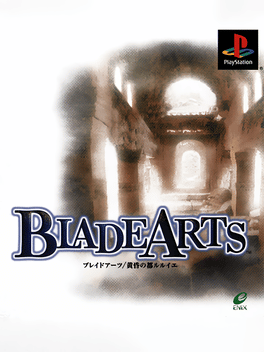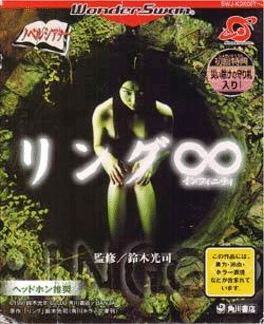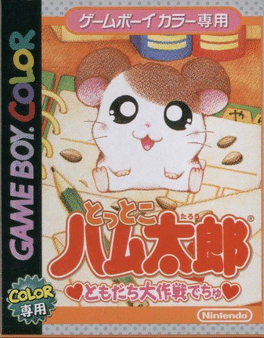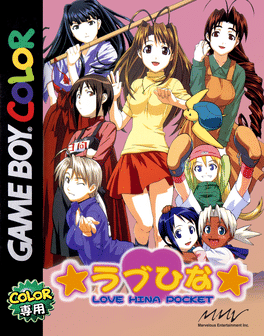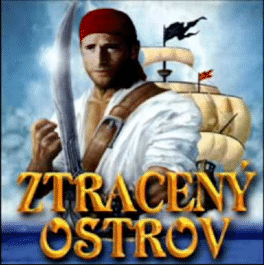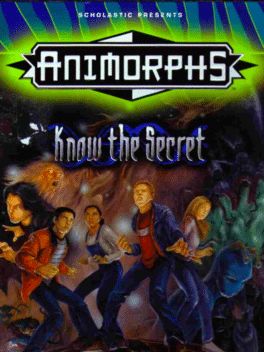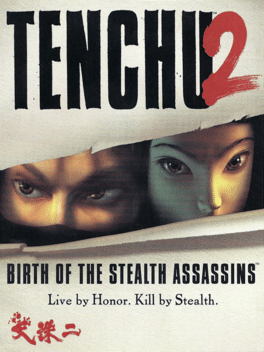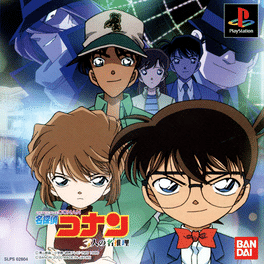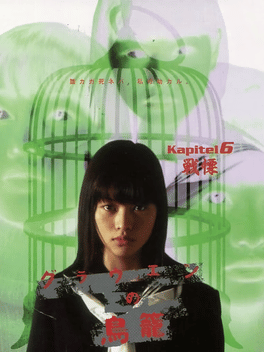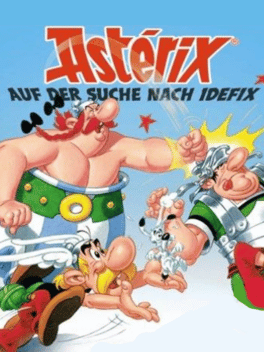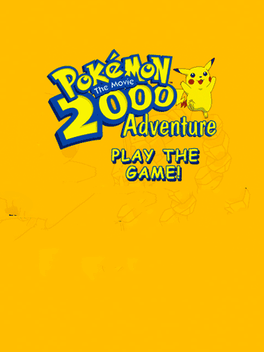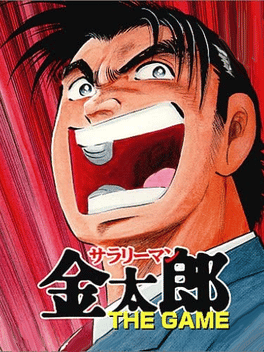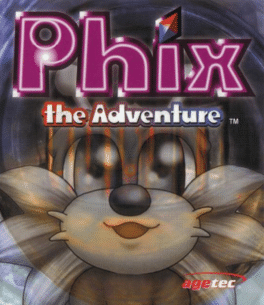New Adventure Games - Page 436
-
Love Hina: Totsuzen no Engeji Happening
2000
There is a new girl in the Hinata Sou. Her name is Fujisawa Mizuho and she is a Tokyo University Student. She is asked by Keitarou-kun's grandmother to become a tutor for Keitarou-kun. If Keitarou-kun fail to pass the coming Entrance Exam for Tokyo University, Mizuho-chan says that she will take the responsibility for it and marry Keitarou-kun. -
Blade Arts: Tasogare no Miyako R'lyeh
2000
An earthquake with epicenter in the South Pacific, causing a massive tidal wave, Peru and Chile, causing a considerable damage in neighboring New Zealand and other South American countries and Ecuador. Missing people died with over two million people, the disaster was unprecedented. On the other hand, the earth's crust associated with earthquakes, many of the islands that are emerging. New islands are being developed in the territory of the country's emergence, the discovery of the island, not a description of the geological occurrences. The Island is named SEIREMU Island, was found in the ruins of the island in the subsequent investigation. The purpose was to investigate the ruins of a mission dispatched by SEIREMU ruins. -
Frogger 2
2000
Frogger 2
2000
Frogger 2 is an extension of the original Frogger, making the levels containing the usual highways and rivers vertically scrolling, with limited side scrolling. Along the way from the bottom to the top of the level, you can collect gems and extra lives, and each level usually has one or more restart points. Along the way, your frog encounters and older, wiser frog called Tadius, who offers advice on strategy. -
Ring: Infinity
2000
Ring: Infinity
2000
Ring: Infinity is a visual novel game. The game begins much like the other stories in the "Ring" series do by introducing you to the "Cursed Videotape". From there, you must find a way to save yourself, or perish. -
Tottoko Hamtaro: Tomodachi Daisakusen Dechu
2000
The first Hamtaro game ever released. Its release remains exclusive to Japan. -
Love Hina Pocket
2000
Love Hina Pocket
2000
You are Keitaro Urashima, who has 7 days to do various things in the game, and win the heart of the girl he wants to get. The first six days, Keitaro does various things, such as talk to the girl and say the right thing or do the right thing to make the girl happy. The player can choose any of the girls living at the Hinata-sou: Naru, Mutsumi, Shinobu, Kaolla, Motoko, Kitsune, Sarah, and even Haruka. As the girls feelings increase toward Keitaro, they are likely to do nice things for him. But be careful because if you upset them, there will be hell to pay. -
Detective Conan: Nishi no Meitantei Saidai no Kiki!?
2000
Detective Conan: Nishi no Meitantei Saidai no Kiki!? is an Adventure game, developed by Tomcat System and published by Bandai, which was released in Japan in 2000. -
Tenchu 2: Birth of the Stealth Assassins
2000
star 8.1Tenchu 2 is a prequel to Tenchu, telling a tale of events prior to those of the previous game. Once again, you can play as Ayame or Rikimaru, two faithful and honorable ninja whose lord is a gentle man in an age of warfare. With your training nearly complete, you find yourself caught up in aiding your lord against a civil war in his own domain. All is not what it seems, however, and you'll soon realize that your greatest threat has been forged much like you. Much like its predecessor, Tenchu 2 is a 3D third person stealth action game. You are not only rewarded for stealth, but also for efficiency of movement this time. This extra feature increases the difficulty of achieving the better items, as you not only have to be quiet, but be direct and near perfect in your steps. -
Detective Conan: 3-nin no Meitantei
2000
Detective Conan: 3-nin no Meitantei is a PlayStation game released in 2000 based on the popular anime of the same name, translated to Detective Conan. -
Taz Express
2000
Taz Express
2000
Taz - a delivery boy? Would you trust THIS guy to deliver your fragile package? Tired of seeing Taz do nothing but hang around the house and watch TV, She-Devil decides Taz needs to find a job. She finds the perfect one for him - as a delivery boy for the next courier service, "Taz Express". Your job: Help Taz protect the package long enough to deliver it. -
Grauen no Torikago: Kapitel 6 - Senritsu
2000
Grauen no Torikago: Kapitel 6 - Senritsu is the sixth and final chapter of a horror movie sold exclusively through the Dreamcast Direct online service. -
Twilight Syndrome Saikai
2000
The story of Twilight Syndrome: Saikai focuses on four Japanese teenagers: Yuri, her sister Masa, and their friends Atsushi and Aya. It all begins when the youngsters hear rumors about spirits contained in the school building. At night, Yuri and her friends go into the school and play a spirit-summoning game. Suddenly, real ghosts appear and scare the teenagers away. The next day, Yuri is almost ready to believe it was all a dream... but naturally it wasn't. The dark secrets of the lost souls are going to be revealed only to those which possess a special sense - the Twilight Syndrome.. The third entry in the Twilight Syndrome series is also a horror adventure, sharing most gameplay elements with its predecessors. The gameplay here is very minimalistic: the player can navigate the 3D models of the heroes (several characters can be controlled at once, as a group) through the limited areas (also rendered in 3D), searching for clues and escaping from danger. There is no other interaction, no usable items, and no comba -
Astérix: Search for Dogmatix
2000
If you have trouble choosing between an adventure game with a suspenseful, in-depth investigation and a game of skill made for joystick fanatics, "Asterix: search for Dogmatix" is just for you! If you play in "adventure" mode, you set out to search for Dogmatix in six worlds and 30 levels (taking you on journeys throughout Gaul, Egypt, Rome, etc.). And the dozen or so mini-games in "instant fun" mode are sure to keep your fingers busy between two stations on the underground. There's a catch, though: to access the whole set of mini-games, you have to win Bonus Tokens by playing in "adventure" mode. By Belenos, this is a game for the truly indomitable! -
Pokémon 2000 Adventure Game
2000
Pokémon 2000 Adventure Game was an online game developed by Cyberworld International Corporation as a tie-in to Pokémon the Movie 2000. It utilized Cyberworld's proprietary QBORG technology to display 2.5D environments in a specialized browser. According to Neil Marshall, who served as a programmer and technical director for the project, the game was only available for a month before being pulled due to "a contract dispute". However, at least one file existed as late as 2003, and the front page of the game existed as late as 2009 according to Wayback Machine. The game had the player set their name, choose a Pokémon team, and select difficulty. The player would navigate a 2.5D environment, with web pages displayed on a side panel allowing for further interaction with the game world. The goal of the game was to travel to three islands, each guarded by one of the three legendary bird Pokémon, Moltres, Zapdos, and Articuno, and retrieve an Ancient Sphere from each island. -
Dear Daniel no Sweet Adventure: Kitty-chan wo Sagashite
2000
Dear Daniel no Sweet Adventure: Kitty-chan wo Sagashite is a Japan-only Game Boy Color game. -
Barney: On Location - All Around Town
2000
Barney On Location - All Around Town is a PC game that was released on July 10, 2000 by Hasbro Interactive. -
Salary Man Kintarou: The Game
2000
Salary Man Kintarou: The Game is a Playstation game based on comics of the same name. It consists of many mini-games. -
Phix: The Adventure
2000
Phix: The Adventure
2000
The Magnia Stone, the sacred stone of the Magnetic World is knocked off its floating altar in the sky and falls towards a slumbering creature called Phix. He swallows it and starts to attract metallic objects and creatures. This upsets the balance of the world, and evil creatures start to appear throughout the land. Phix must travel to five realms in order to bring the stone to its original place and return peace.

